South Australia’s newest state heritage places
A century-old cinema, a beachside block of flats and a cave complex are among 12 places added to the South Australian Heritage Register last financial year. See the list

The state government body responsible for the assessment and listing of state heritage places, the South Australian Heritage Council, last week published its 2023/24 annual report listing the 12 places confirmed in the state heritage register last financial year.
The additions bring the number of state heritage places in South Australia to 2331 as of June 2024, according to Heritage Council chair Sandy Verschoor.
State heritage listing gives a building or place legal protections against demolition or alteration. Anyone can nominate a structure or location for state heritage listing, although it must satisfy one of seven criteria within the Heritage Places Act 1993.
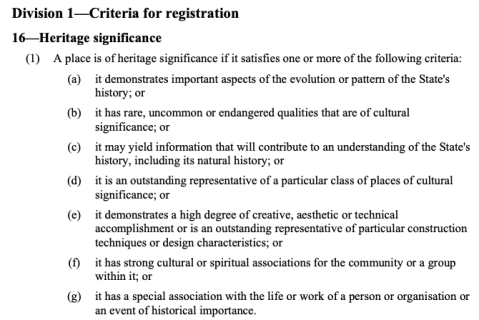
If the Heritage Council deems it to meet one of the criteria, the place is then “provisionally” entered into the state heritage register – i.e. given temporary protection – and a three-month public consultation process starts about whether the place should be given permanent state heritage status.
After the consultation, the Heritage Council then meets to determine whether to “confirm” the place in the state heritage register.
These are the 12 places that were confirmed in the state heritage register in 2023/24.
Victa Cinema (former Ozone Theatre)
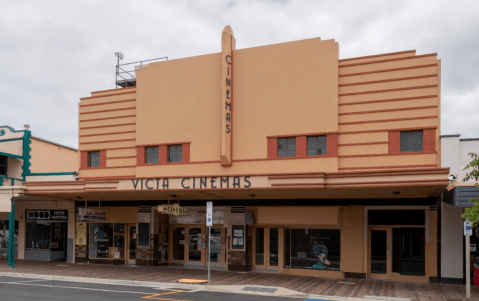
Address: 37-41 Ocean Street, Victor Harbor
Built: 1923
Confirmed in South Australian heritage register: August 17, 2023
Heritage Council’s Statement of Heritage Significance: “The Victa Cinema (former Ozone Theatre) demonstrates the evolution of motion pictures as a new form of mass entertainment in the twentieth century, and in particular, the role of cinema-going and its contribution to community building in regional South Australia in the interwar period.”
“As the first South Australian picture theatre purpose-built to screen ‘talkies,’ the Victa Cinema established the pattern for all picture theatres that followed and is both an influential and pivotal example of its class, demonstrating an unusually high level of intactness and integrity.
“The Victa Cinema is an early, outstanding example of interwar streamlined architecture articulating many of the key attributes of the style such as clean, parallel lines, contrasting bands of dissimilar materials, and horizontal emphasis with vertical relief.
“The Victa Cinema is also the only remaining intact picture theatre purpose-built by Ozone Theatres Limited, an innovative and influential family-owned exhibition company which grew to be the largest in South Australia in the first half of the twentieth century.”
Haigh Mansions


Address: 323 Esplanade, Henley Beach
Built: 1921
Confirmed in South Australian heritage register: June 27, 2024
Heritage Council’s Statement of Heritage Significance: “Haigh Mansions demonstrates an important evolution in the way South Australians lived during the twentieth century.”
You might like
“Haigh Mansions is the earliest surviving example of the purpose-built flat developments that began to reshape the suburbs after the First World War, providing the middle class with a popular alternative to conventional detached housing.
“Haigh Mansions is an uncommon example of this new, modern way of living introducing elements that were widely emulated in later purpose-built flat developments including, two-wing configuration separated by a light well improving access to natural light and ventilation, and external reinforced concrete staircases employed as an architectural feature.”
Shandon (flats)


Address: 88 Moseley Street, Glenelg South
Built: 1940
Confirmed in South Australian heritage register: June 27, 2024
Heritage Council’s Statement of Heritage Significance: “Shandon (flats) demonstrates an important evolution in the way South Australians lived during the twentieth century. The development of purpose-built flats began to reshape the suburbs after the First World War, providing the middle class with a popular alternative to conventional detached housing.”
“Developed by Edith Duncan as owner-occupier, Shandon (flats) further demonstrates that women were actively involved in the rise of flats as a new way of living during the interwar period.
“Constructed in 1940 in Glenelg South, Shandon (flats) is an uncommon example of this new, modern way of living, as the Second World War brought a halt to the construction of dwellings. Shandon (flats) is an outstanding example of purpose-built interwar flats, demonstrating many of the principal characteristics of the class.
“Shandon (flats) is also an outstanding representative of interwar streamlined architecture, articulating many of the key attributes of the style such as bold, asymmetrical massing, clean lines and rounded corners, and horizontal emphasis with contrasting vertical relief.”
Dr Kent’s Paddock

Address: 3-57 Capper Street and 28-48 Rundle Street, Kent Town
Built: 1978-1979
Confirmed in South Australian heritage register: October 19, 2023
Heritage Council’s Statement of Heritage Significance: “Stage 1 of Dr Kent’s Paddock Housing Complex demonstrates an important evolution in the history of social housing in South Australia. Built by the South Australian Housing Trust in 1978-1979 and designed by acclaimed South Australian architect Newell Platten while employed as Chief Design Architect, Dr Kent’s Paddock Housing Complex demonstrates the South Australian Housing Trust’s transition from provider of homes for workers to become the primary provider of social housing in South Australia.”
“To meet the increasing needs for social housing during a time of social and economic change and inspired by broader urban renewal and densification of the urban environment, the South Australian Housing Trust became the industry leader in providing medium density cluster infill developments with Dr Kent’s Paddock Housing Complex considered the best of this type.
“Dr Kent’s Paddock Housing Complex also has a special association with the work of Newell Platten. Noted for his residential designs, Platten designed Dr Kent’s Paddock Housing Complex at the height of his career and it demonstrates the translation of his ideas for medium density infill design begun in the late 1960s.
“The complex embodies the design innovation in social housing Platten was attempting to achieve and it is one of the best examples of the new typology Platten led in the creation of for the South Australian Housing Trust in the 1970s and 1980s.”
Tantanoola Cave Complex

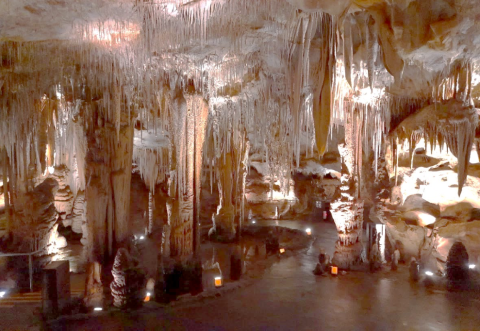
Address: Tantanoola Caves Conservation Park, 32047 Princes Highway
Built: N/A
Confirmed in South Australian heritage register: October 19, 2023
Heritage Council’s Statement of Heritage Significance: “The Tantanoola Caves Complex is located along a dolomitic karst ridge featuring the only known pink dolomite caves in South Australia. The abundance and variety of types of decorations including drapery, helictites, flowstones and wedding cake formations found in Tourist Cave and Lake Cave are impressive in their density and complexity.”
“The Tantanoola Cave Complex including Tourist Cave, Lake Cave, Upand-Down Rocks and 16 smaller karst features have a high potential of yielding new scientific information about the natural history of South Australia and specifically the geological and speleological development of the South East.
“Knowledge of the dolomite presence will also contribute to a broader understanding about the processes, likely volcanic, required to convert limestone to dolomite, and the regional impact of volcanism.”
Naracoorte Church of Christ
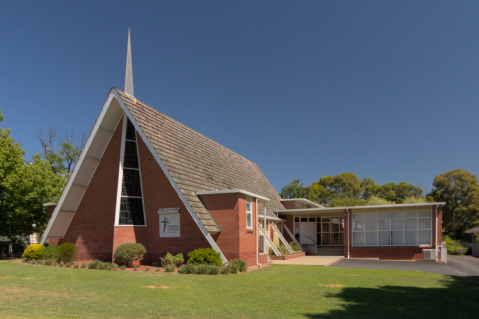
Address: 64 Jenkins Terrace, Naracoorte
Built: 1966
Confirmed in South Australian heritage register: May 23, 2024
Heritage Council’s Statement of Heritage Significance: “Naracoorte Church of Christ is an outstanding example of a post-war church. The church complex, completed in 1966, was one of relatively few churches designed and built in a single construction phase during the post-war period.”
“In addition to the main worship space, the church possesses a number of spaces designed specifically as community facilities including activity hall, kitchen, kindergarten and a series of Sunday school rooms. As such, Naracoorte Church of Christ is an unusually complete, coherent and intact example of the class of place, post-war church.
“The Naracoorte Church of Christ is also an outstanding example of late twentieth-century ecclesiastical Modern Movement architecture in South Australia. The building is notable for the dramatic and distinctive A-frame roof, spire and steel joist buttressing of its chapel, contrasting with the flat roofs of the non-worship wings. These elements are unified through the use of similar materials, details and modular construction units throughout the complex.”
St Patrick’s Schoolhouse

Stay informed, daily
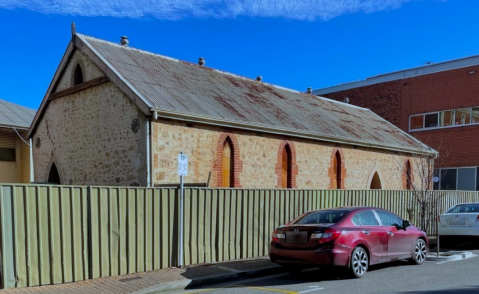
Address: 268 Grote Street, Adelaide
Built: 1848
Confirmed in South Australian heritage register: February 15, 2024
Heritage Council’s Statement of Heritage Significance: “St Patrick’s Schoolhouse is one of the State’s oldest surviving school buildings and is the oldest bespoke Catholic school building in South Australia.”
“Erected in 1848, St Patrick’s Schoolhouse demonstrates the emergence and evolution of schooling in South Australia and specifically Bishop Francis Murphy’s efforts to establish Catholic education. It is also a rare example of a school built prior to the first Education Act of 1851.”
Former Salisbury Methodist Church
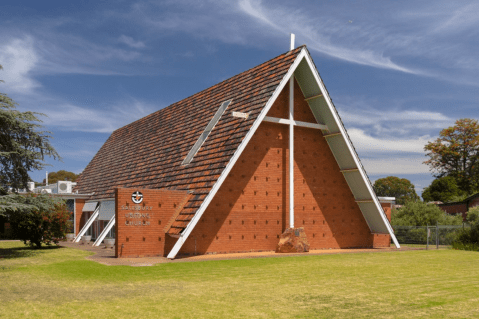
Address: 59-61 Park Terrace, Salisbury
Built: 1961
Confirmed in South Australian heritage register: May 23, 2024
Heritage Council’s Statement of Heritage Significance: “The former Salisbury Methodist Church, opened in 1961, is an outstanding example of late twentieth-century ecclesiastical Modern Movement architecture in South Australia.
“South Australian architect W. Lance Brune’s innovative, well-resolved design is notable for its dramatic and distinctive A-frame roof, feature cross and foundation stone and the exposed steel joist rafters of its chapel, contrasting with the flat roofs of the non-worship wings.
“These elements are unified through the use of similar materials, details and modular construction units throughout the exterior of the complex.
“The former Salisbury Methodist Church was the prototype that inspired numerous other true A-frame churches subsequently built in South Australia.”
St John Vianney’s Catholic Church
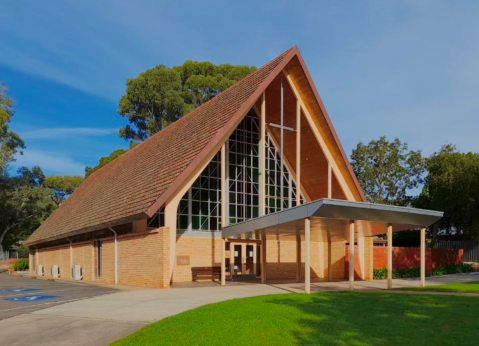
Address: 544 Glynburn Road, Burnside
Built: 1962
Confirmed in South Australian heritage register: March 14, 2024
Heritage Council’s Statement of Heritage Significance: “St John Vianney’s Catholic Church is an outstanding, critically recognised example of late twentieth-century ecclesiastical Modern Movement architecture in South Australia, finely articulating many key attributes of the style.
“The church is significant for its structural system comprising ten welded-steel box-section portal frames. The frames are tapered and curved to accommodate structural loads and expressed as architectural features of the building and represent an outstanding creative adaptation of the available materials and technology of the period.
“The church is also noted for its considered response to site and setting, its use of natural-finish materials, its thoughtful implementation of natural and artificial lighting and its spacious interior.”
Jenkins Street Slips Precinct

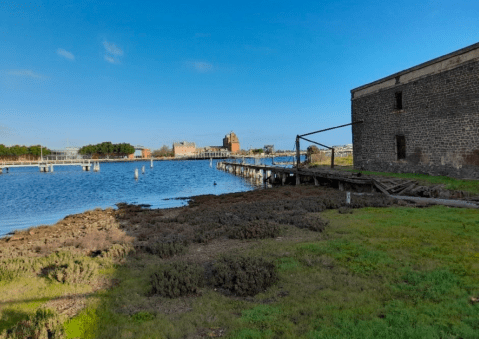
Address: 1 Jenkins Street, New Port
Built: circa 1861
Confirmed in South Australian heritage register: March 14, 2024
Heritage Council’s Statement of Heritage Significance: “The Jenkins Street Slips Precinct is one of only a few places in South Australia where archaeological deposits associated with nineteenth and early twentieth-century shipbuilding are likely to remain.
“These deposits are believed to be highly intact and it is anticipated that thorough archaeological investigation of the Jenkins Street Slips Precinct will yield historical information about nineteenth and early twentieth-century shipbuilding not available through any other means.”
Poole Creek Fossil Flora Complex, South of Kati Thanda South (Lake Eyre South)
Address: South of Kati Thanda South (Lake Eyre South) and Covrichina Dam, Callanna
Built: N/A
Confirmed in South Australian heritage register: August 17, 2023
Heritage Council’s Statement of Heritage Significance: “The Poole Creek Fossil Flora Complex, including a portion of the Poole Creek Palaeochannel Geological Monument located south of Kati Thanda South (Lake Eyre South) contains rare silicified botanical fossils of leaves, wood and fruit and a unique type specimen of the pine Manchesteria australis, deposited during the Cenozoic Era (66 Million years ago to present).”
“The fossil assemblages extend over 29.5km of dry riverbed and contain rare seed cones resembling Banksia, eucalypt-like nuts and leaves of various species with a high quality of preservation. The fossil record contained in the complex extends the known temporal and geographical range of some identified species. Poole Creek Fossil Flora Complex also has a high potential to yield further information that will enable a greater understanding of the environment and evolution of the Australian continent in ancient times.”
Nelly Creek Fossil Flora Complex, Arabana Country, Oodnadatta Track, Callana
Address: South of Kati Thanda South (Lake Eyre South), Oodnadatta Track, Callanna
Built: N/A
Confirmed in South Australian heritage register: August 17, 2023
Heritage Council’s Statement of Heritage Significance: “The Nelly Creek Fossil Flora Complex comprises seven fossil sites containing numerous palaeobotanical fossils (leaves, wood and pollen) dating from the Eocene Epoch (~56–33 Million years ago (Ma)).”
“The Nelly Creek site is considered to be Middle-Late Eocene in age and includes many mummified fossil leaf assemblages that are rarely found elsewhere in South Australia. The combination of mummified fossil leaves and its central Australian locality differentiates Nelly Creek from all other South Australian fossil sites.
“The species preserved in the fossils at the site expand the known range of extinct and extant native plant species, with many not found anywhere else within the State. Additionally, the anatomy of the preserved flora differs greatly from those found at other South Australian fossil sites and appears to denote a transitional period in climate not shown in any other fossil assemblages in the State.
“As such, the place can be considered of State and National interest. The Nelly Creek Fossil Flora Complex is also highly likely to yield information that will build knowledge of Eocene environments within South Australia, including climate change and the aridification of the State.”








